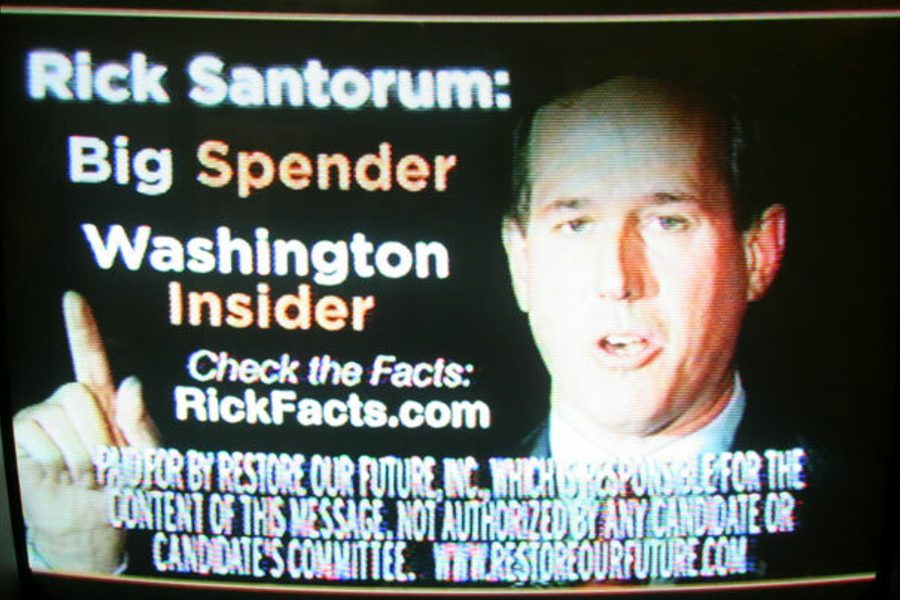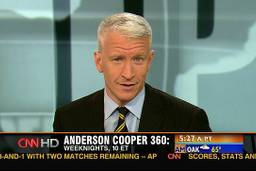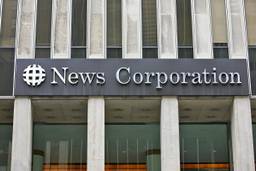Unmasking the Super PACs
Why are broadcasters fighting an FCC effort to bring their political ad records into the 21st century?
Kenneth Rapoza

It’s election season in Anytown, U.S.A., and the incumbent County Dogcatcher faces some fierce competition. An issue ad from a Super PAC called Puppy Love has voters convinced the incumbent kills dogs for sport. A muckraking reporter trying to impress her editor walks into the local TV station and asks to see its political file, which offers information about who is paying for the station’s political ads, including the one Puppy Love produced.
She learns that on Puppy Love’s board of directors sits one Cruella de Vil. The reporter let’s the town know all about this Super PAC propagandist trying to influence their dog catching vote. The truth is out there. Unmasked, Cruella has to come up with new wicked ways to trick voters. She will likely do just that, but in the meantime, her tricks got treated.
Candidates and Super PACs will spend more than $3 billion on political advertisements before the November this election cycle. The broadcast media do not want reporters to access information about those ads online – and they’ve come up with some pretty lame excuses as to why.
In the daily grind of a political reporter covering an election, following the money is usually dependent on two things. Either the reporter gets lucky enough to know someone in tight with Cruella’s bumbling idiot sidekicks and is told by an off-record source who is behind the attack ads, or the reporter walks into the TV station that’s running them and asks to go through a file cabinet full of ad info. If that sounds so pre-Netscape 1994, it’s because it is.
Desktops were mostly black and white back in the early-Internet era, where the National Association of Broadcasters wishes to remain. Ironically, the broadcasters’ unwillingness to update record-keeping for the Internet Age makes life more difficult for the political beat reporters, including those that work at the very stations that are against digitizing the info.
If a Washington Post reporter wants to know who exactly (meaning the names of real people, not anodyne organization names like “Restore Our Future”) was behind the anti-gay marriage ads attacking a presidential candidate in swing state Ohio, she’d have to fly there to examine the political files of TV stations from Cleveland to Cincinnati. Not only is flying to Ohio time consuming, it is also costly. For a business that has no money for reporters anymore, sending them cross-country to investigate Super PAC ads is unlikely.
Meanwhile, voters are getting bombarded with propaganda. In fact, during an election year it is more likely that TV news viewers spend more time watching issue ads than they spend watching reporters fact-check those ads. A University of Wisconsin-Madison study of 2006 midterm election news coverage in nine Midwestern news markets showed that of the 900 hours of 1,629 election-related stories, the average 30-minute newscast ran 68 seconds of election coverage. During the final month of the midterms, stations ran an average of 4:24 minutes of political advertising. News coverage on politics was 1:43 minutes.
This isn’t auto industry ads versus auto industry coverage. This is political ads versus political coverage, which is often a matter of fiction versus fact; a propagandist media versus a democratic one.
Corie Wright, an attorney with Free Press in Washington says that if people are getting most of their political info from issue ads, stations should be more transparent about those ads by disclosing who is behind them online.
Let’s face it: No one is going to walk into an office at their local Fox News affiliate and rifle through political ad files. Some stations, as New York Times reporter Meredith Hoffman discovered in a December 4 article, will not make it easy. By the end of April, the Federal Communications Commission will decide whether or not to force broadcasters to enter the 21st Century and digitize those political files.
By doing so, reporters, advocacy groups, and concerned citizens could see that Karl Rove, the former top George W. Bush advisor who runs an astroturf group called Crossroads Grassroots Policy Strategies, was sitting on the board of directors of the Super PAC behind those Ohio ads.
Again, online disclosure doesn’t mean front groups suddenly cease to exist, it just makes their work that much more complicated.
“This is not a controversial measure for broadcasters,” says Andrew Schwartzman, an attorney with Media Access that’s now lobbying the FCC to get Super PACs to disclose who pays for the ads. “The broadcasters have the ad information anyway, and they must make it public. The only difference is that they will have to digitize it if the ruling passes. It’s a good first step to truth in political advertising,” he says.
Back in 1971, Congress required that political candidates get the lowest price for ads during campaign season. The FCC followed up by requiring stations to make political-ad information public so candidates can be assured they are getting a fair deal by assessing whether their rivals are paying less. Broadcasters bear this paperwork burden because they have free use of the public airwaves and broadcast spectrum. The Federal Election Commission also has data on political candidate ads, but only for national campaigns, not for local elections; and definitely no data on independently run issue ads. Most reporters and members of the public probably care less how much Mitt Romney pays for a 30-second TV ad. But they’d be interested in knowing who is pulling Super PACs’ strings.
“The broadcasters haven’t any good excuses,” says Wright, who came up with the Cruella de Vil comparison. “This is an industry that creates, gathers and sends audio and images through the spectrum every day, all day, and they think it will be too burdensome to digitize these files?” In October, the FCC issued its notice of proposed rulemaking to require broadcasters to put their political files online. They’ve solicited comments, and broadcasters all went on record as opposing the rule change. If their FCC filings are to be believed, the change would be too costly, too much work to implement, and open up doors to lawsuits.
In a 29-page comment sent to the FCC on January 17, the major broadcast networks called the proposal “burdensome,” over-regulatory, and said that making ad rate information public would put broadcasters at a “distinct negotiating disadvantage” regarding what they can charge.
Yet because those files are already mandated to be public, any company can send an intern into a TV station to go through the files and record their competitor’s political ad rates. The industry also fears that advocacy groups like Free Press and Media Access would have an easier time to litigate broadcasters they “perceive” as “not serving the public interest,” the broadcasters wrote.
Other opposing characters sound like moonlighting copywriters for issue ads. Jerald Fritz, senior vice president of Allbritton Communications, owner of six ABC-affiliates in six markets, said in a January 27 filing that placing the files online “would ultimately lead to a Soviet-style standardization of the way advertising should be sold as determined by the government.”
Wow. The real beneficiaries of the status quo are Super PACs – anyone behind a Super PAC would hate this rule change. Too bad. If people could easily access information about Puppy Love from the FCC’s website, it makes the democratic process more transparent.
In mid-January, 12 journalism schools deans wrote a letter to the FCC in favor of digitizing stations’ political file. On February 22, eight Democratic senators wrote to agency Chairman Julius Genachowski in favor of the ruling.
“The problem (of disclosure) is compounded by the Citizens United decision and the proliferation of Super PACs,” they wrote about the 2010 Supreme Court ruling that allowed unlimited corporate donations to political candidates.
Only Republicans have come out against the proposal, including Robert McDowell, the only Republican FCC commissioner. He warned in an article in The Hill on March 19 that the agency and Congress should “think carefully” about new laws and regulations that are seen as “inhibiting free speech,” a nod to the Citizens United case.
Free speech is surely not being inhibited. Transparency is being enhanced. For power-brokers like Rove, any step in that direction gets reporters, and concerned citizens, closer to unmasking the wizards.
This reporting is supported by The Media Consortium.







